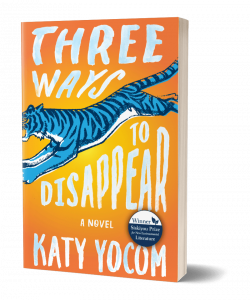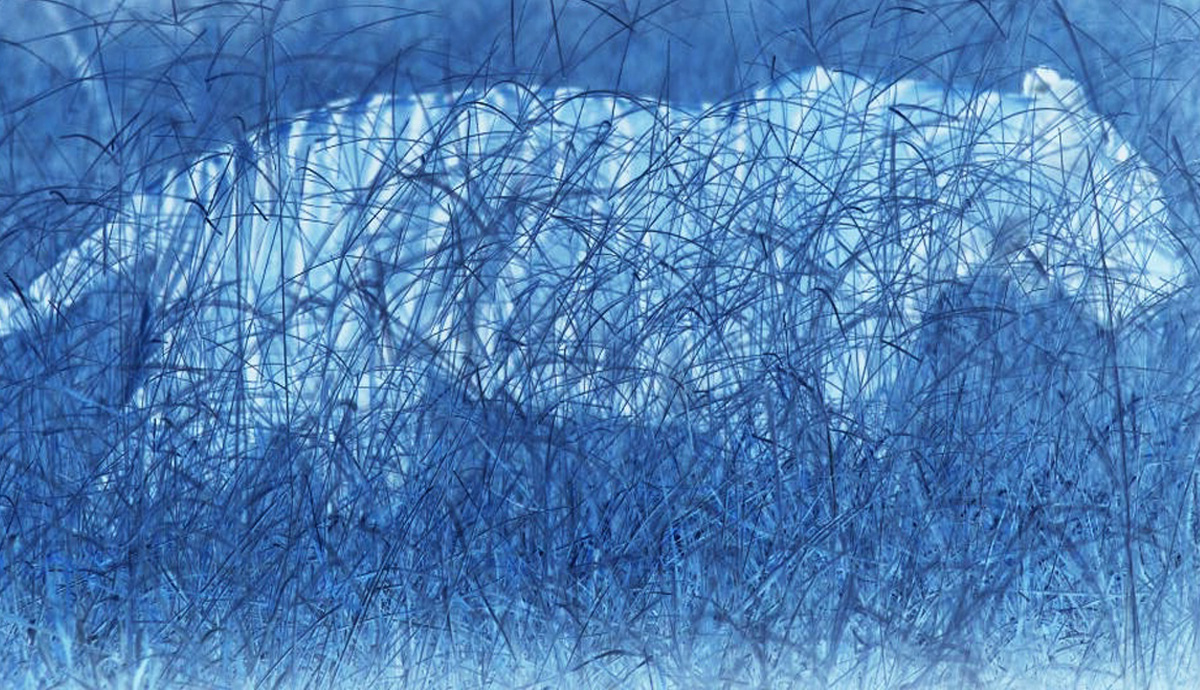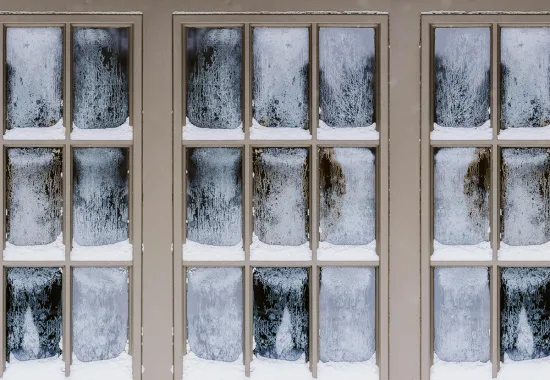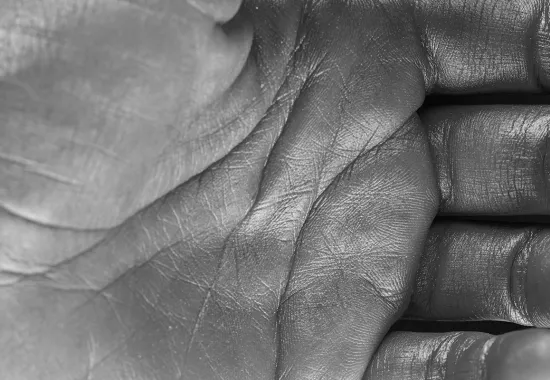Narrative Preservation: A review of Three Ways to Disappear by Katy Yocom
Three Ways to Disappear, Katy Yocom. Ashland Creek Press, 316p, Paper $18.95
My husband and I have a private reading club. We read aloud every night before bed and the topic of discussion over our coffee the next morning is often the book we are reading. Katy Yocom’s debut novel Three Ways to Disappear was a book that generated thought-provoking discussion long after we turned the last page.
We live in Alaska. As I write this, July temperatures have soared to record-breaking 90 degrees (32 C), and smoke has obliterated the view of the mountains behind our home. Wildfires have already scorched 1.2 million acres of the state this summer. Seven dead gray whales have washed up on Alaska shores this week alone, bringing the total to twenty-two so far this year. The Arctic Inupiaq village of Kivalina is being threatened by rising sea levels and erosion. Yocom’s novel touches on environmental themes of a story that we are living here in real-time.
 Three Ways to Disappear depicts the relationships of the DeVaughan sisters who were each shaped by a tragedy that befell their family when they were young. Quinn is raising a family in Louisville, Kentucky, with a child who has severe asthma. Sarah is a globe-trotting journalist whose interest in the conservation of tigers has landed her in a job in India, where the sisters grew up. In many respects, Sarah and Quinn are opposites. Sarah is a warrior, willing to take risks; Quinn is a thinker and careful to avoid peril.
Three Ways to Disappear depicts the relationships of the DeVaughan sisters who were each shaped by a tragedy that befell their family when they were young. Quinn is raising a family in Louisville, Kentucky, with a child who has severe asthma. Sarah is a globe-trotting journalist whose interest in the conservation of tigers has landed her in a job in India, where the sisters grew up. In many respects, Sarah and Quinn are opposites. Sarah is a warrior, willing to take risks; Quinn is a thinker and careful to avoid peril.
The novel organically raises questions about the efforts to preserve imperiled species. Those efforts often push up against cultural norms and belief systems, and Sarah’s story takes place at the intersection of these divergent values. It is one thing to be a relatively wealthy American woman with a sincere call to save tigers and another thing to be a local villager whose livestock and livelihood depend on water that is now off limits within the boundaries of the national park. The controversy reaches a boiling point during a regional drought and marks a dramatic turning point in the novel.
In Alaska, the establishment of national parks and preserves in the 1970s was vehemently—sometimes violently—opposed by local residents who felt robbed of the lands they once considered the last bastion of the American frontier. President Jimmy Carter was burned in effigy and national park aircraft were firebombed in protest. Passions ran high as love for unfettered wilderness pushed against devotion to the freedoms that wilderness represented.
Yocom’s luscious description of the Ranthambhore tiger reserve reveres the habitat itself. Readers feel the shade of the kulu trees, see the Sambar deer graze, and catch the “iridescent flash of blue” as a kingfisher flies past. The legendary tigress, Machhli, who was the oldest surviving tiger in the wild until she died in 2016, is a character in the novel. Sarah must navigate her commitment to the preservation of tigers with her burgeoning but forbidden love for a local man.
Meanwhile, Quinn is in Kentucky navigating a troubled marriage and the demands of a tight-lipped mother whose secrets hold a key to understanding their childhood. The Quinn sisters’ paths converge in India as they try to reconnect with each other and with their troubled past.
It turns out in Alaska that the wilderness here was never “locked up” with the establishment of national parks as many feared. Instead, it was “locked open,” as former Governor Jay Hammond liked to say, for the preservation of one of the last truly wild places on earth. Most national parks in the contiguous U.S. offer facsimiles of wilderness as tourists drive in RVs to see bison grazing next to the road. In Alaska, there are no roads and no facilities at many of the parks. Thus, truly wild places are preserved in a natural state that offers an ever-shrinking laboratory of what is possible when the land is left to its own devices.
The deeply human plot in Three Ways to Disappear has the forward momentum that my husband enjoyed, with a richness of language that satisfied us both. In the smoke of Alaska’s heat wave, in a time of historic environmental changes, the book’s title held no small amount of irony for us.
The topic of the environment must by necessity include economics and the reality of politics. Yet in these vitriolic times, how do you find words to bring disparate voices to the table without further polarizing the conversation? Literature can take that role as it bridges a strong fictional narrative to the complicated world in which we live. In our conversations, both my husband and I agreed that Yocom’s novel achieved this with clarity and grace. Not only are the characters changed by the end of the story, we are changed for having known them.
Recommended
The Salamander
Herring
The Old Man in the Café






